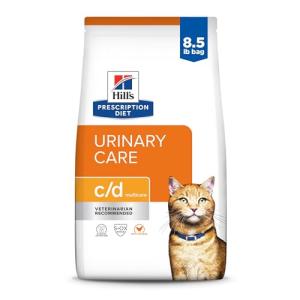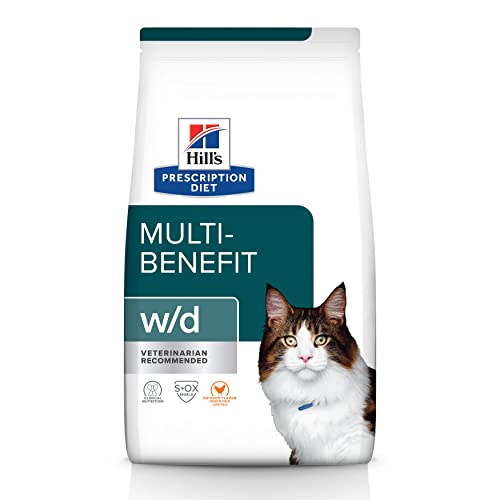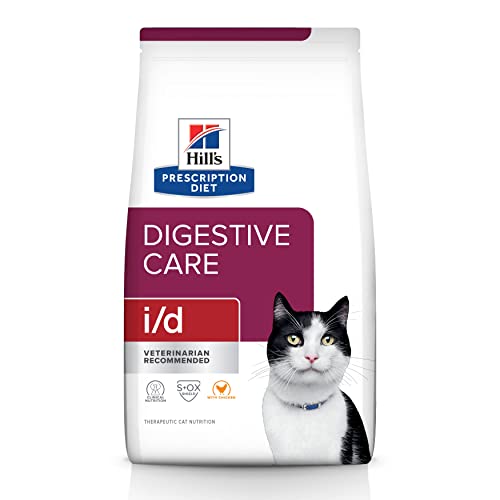"Fluffy used to greet me at the door with a playful pounce, always ready for a chase with her feather toy. Lately, though, she just seems… tired. She’s been drinking water like it’s going out of style and using the litter box much more often, and while she still seems hungry, she’s losing weight. Is she just getting old, or could something else be going on?" This scenario, or variations of it, is a concern for many cat owners. While changes in behavior can sometimes be attributed to aging, these particular symptoms – increased thirst, frequent urination, and weight loss despite a good appetite – are classic red flags, often signaling a condition that affects a significant portion of the senior feline population: feline diabetes. Discovering your cat has diabetes can understandably be a source of worry and uncertainty. The word itself conjures images of needles, special diets, and complex medical management. However, while feline diabetes is a serious condition requiring diligent care, it is far from a sentence of diminished quality of life. With proper understanding, early diagnosis, and a committed approach to management, you can play a crucial role in helping your feline companion not just survive, but thrive, living a long, happy, and fulfilling life despite their diabetes diagnosis. This article aims to empower you, the devoted cat owner, with the knowledge you need to navigate the world of feline diabetes. We'll explore the intricacies of this condition, demystify the symptoms to watch for, unravel the diagnostic process, and, most importantly, equip you with the practical management strategies that will become the cornerstones of your cat’s well-being. From insulin therapy and dietary adjustments to home monitoring and potential complications, we will cover the essential aspects of feline diabetes care, ensuring you feel confident and prepared to support your beloved cat every step of the way.
To understand feline diabetes, we must first grasp the basics of how a healthy cat’s body regulates sugar, or glucose. Glucose is the primary source of energy for the body’s cells, fueling everything from muscle movement to brain function. To utilize this glucose, cells require a special hormone called insulin. Produced by the pancreas, insulin acts like a "key" that unlocks the doors to cells, allowing glucose to enter and be utilized for energy production. In a healthy cat, this system works seamlessly: blood glucose levels rise after a meal, the pancreas releases insulin, and glucose is efficiently transported into cells, providing the necessary energy and keeping blood sugar levels within a normal range. However, in feline diabetes, this intricate regulatory system malfunctions, leading to elevated blood glucose levels and a cascade of related health issues.
Feline diabetes isn't a single entity, but rather encompasses different types, each with its distinct underlying mechanism. The most prevalent form in cats, mirroring Type 2 diabetes in humans, is Type 2 Diabetes, also known as insulin-resistant diabetes. In this type, the cat’s body still produces insulin, often initially even in increased amounts, but the cells become increasingly resistant to its effects. Imagine the cellular doors becoming less responsive to the insulin key, requiring more and more insulin to achieve the same effect. This resistance prevents glucose from entering cells efficiently, leading to a buildup of glucose in the bloodstream and cellular energy starvation. Over time, the pancreas, working overtime to produce more insulin in an attempt to overcome this resistance, can become exhausted and its insulin-producing capacity may decline. Type 2 diabetes in cats is strongly linked to lifestyle factors, with obesity, inactivity, and advancing age being significant contributing factors.
Less commonly, cats can develop Type 1 Diabetes, analogous to human Type 1 diabetes, also termed insulin-deficient diabetes. In this form, the cat's pancreas simply does not produce enough insulin, or in some cases, any insulin at all. This deficiency is often attributed to an autoimmune process where the body's immune system mistakenly attacks and destroys the insulin-producing cells within the pancreas. Without sufficient insulin, glucose cannot enter cells effectively, leading to persistent hyperglycemia and cellular energy deprivation. Type 1 diabetes requires lifelong insulin therapy as the pancreas is unable to produce the hormone naturally.
Adding another layer of complexity, some cats, particularly those initially diagnosed with Type 2 diabetes, may experience Transient Diabetes. This refers to a temporary form of diabetes that can, in some cases, resolve with diligent treatment and lifestyle adjustments, particularly weight loss. In these instances, aggressive management of blood glucose, often involving insulin therapy combined with dietary changes, can help improve insulin sensitivity and allow the pancreas to recover some function. In successful cases of transient diabetes, cats may eventually be weaned off insulin, but ongoing monitoring is crucial as remission can be temporary, and diabetes may recur.
While any cat can develop diabetes, certain factors increase the risk, making some cats more predisposed to this condition. Age is a significant risk factor, with middle-aged to senior cats being far more susceptible to developing diabetes than younger cats. Obesity stands out as a major driving force behind Type 2 diabetes in cats. Excess body fat contributes to insulin resistance, making obese cats significantly more likely to develop this condition. A sedentary lifestyle further exacerbates the risk, as inactivity also contributes to insulin resistance. Diet plays a role as well, with high-carbohydrate diets potentially contributing to the development of insulin resistance over time, though this is a complex and debated area. Certain breeds, such as Burmese cats, have shown a predisposition to diabetes, although the condition can affect cats of any breed. Certain medications, particularly corticosteroids, can temporarily or, in some cases, increase the risk of diabetes. Finally, underlying medical conditions like pancreatitis, hyperthyroidism, and acromegaly (a hormonal disorder) can also increase the risk of feline diabetes or complicate its management.
Recognizing the early warning signs of feline diabetes is crucial for prompt diagnosis and timely intervention. The classic symptoms, often referred to as the "P" symptoms, are important indicators to watch out for. Polyuria, or increased urination, is a hallmark symptom. This occurs because when excess glucose builds up in the bloodstream, the kidneys attempt to filter out this excess glucose and eliminate it through the urine. However, glucose in the urine draws water along with it, leading to increased urine volume. Owners may notice significantly larger urine clumps in the litter box, more frequent urination, or even accidents outside the litter box. Polydipsia, or increased thirst, is a direct consequence of polyuria. As the body loses excessive fluids through urination, it triggers the thirst mechanism to compensate for this fluid loss. Diabetic cats will often drink dramatically more water, emptying their water bowl frequently or seeking water from unusual sources like faucets or puddles. Polyphagia, or increased appetite, may seem counterintuitive given that diabetic cats often lose weight, but it’s another classic symptom. Despite having high blood sugar, the cells in a diabetic cat are not effectively receiving glucose for energy due to insulin resistance or deficiency. This cellular energy starvation triggers hunger signals, leading to an increased appetite as the cat’s body attempts to obtain more fuel. However, despite eating more, the glucose cannot be properly utilized by the cells, perpetuating the energy deficit and leading to weight loss.
Beyond the "P" symptoms, other signs can point towards feline diabetes. Weight loss, despite an increased appetite, is a paradoxical but common symptom. As glucose can’t enter cells for energy, the body begins to break down its own muscle and fat stores for fuel, leading to unintended weight loss even while the cat seems to be eating more. Lethargy and weakness are also frequently observed. The lack of glucose reaching cells for energy translates to a lack of overall energy and vitality. Diabetic cats may become less playful, sleep more, and exhibit a general decrease in activity levels. In some diabetic cats, particularly in advanced cases, owners may notice changes in gait or walking, specifically diabetic neuropathy. High blood sugar over time can damage nerves, especially in the hind legs, leading to weakness and a characteristic "plantigrade stance," where the cat walks on their hocks (ankle joints) instead of their toes. A poor coat condition, characterized by dull, dry fur, can also be a sign of diabetes, reflecting underlying metabolic imbalances. Finally, diabetic cats often exhibit increased susceptibility to infections. High blood sugar can weaken the immune system, making them more prone to infections, particularly urinary tract infections (UTIs), which are common in diabetic cats.
In less common or more advanced stages of diabetes, additional symptoms may arise. Vomiting and diarrhea can occur in some cats, particularly if they develop a serious complication called diabetic ketoacidosis (DKA). Sweet-smelling breath, described as "acetone breath," is another concerning sign, also indicative of DKA, a medical emergency. In very advanced stages, or if complications develop, diabetic cats may experience loss of appetite as they feel increasingly unwell. Despite increased thirst, if fluid intake cannot keep up with the excessive urine output, dehydration can occur, further exacerbating their condition.
If you observe any of these symptoms in your cat, especially the classic "P" signs, prompt veterinary attention is crucial. Getting a definitive diagnosis is the first step towards providing your cat with the care they need. The diagnostic process for feline diabetes begins with a thorough veterinary examination and medical history. Your veterinarian will perform a complete physical exam, assessing your cat’s overall health and looking for any physical signs of diabetes or related complications. They will also ask detailed questions about your cat's symptoms, behavior changes, eating and drinking habits, and any risk factors present.
Measuring blood glucose levels is a cornerstone of diabetes diagnosis. An elevated blood glucose level (hyperglycemia) is a key indicator of diabetes. Your veterinarian will typically perform an in-clinic blood glucose test using a handheld glucometer, obtaining a quick reading from a small blood sample, often taken from the ear. However, it's important to acknowledge stress hyperglycemia. The stress of a veterinary visit can temporarily elevate blood glucose levels in cats, even in non-diabetic cats, potentially leading to a false positive diabetes diagnosis based on a single in-clinic reading. To differentiate true diabetes from stress-induced hyperglycemia, additional diagnostic tests are necessary.
Urinalysis, or urine testing, provides valuable complementary information. Glucosuria, the presence of glucose in the urine, is another strong indicator of diabetes, as glucose should not normally be present in detectable amounts in urine. Ketonuria, the presence of ketones in the urine, is a more serious finding, indicating that the body is breaking down fat for energy due to insufficient glucose utilization, a hallmark of uncontrolled diabetes and potential diabetic ketoacidosis (DKA). Urinalysis also helps to rule out urinary tract infections (UTIs), which are common in diabetic cats and need to be identified and treated separately.
The fructosamine test is a crucial blood test that helps differentiate between true diabetes and stress hyperglycemia. Fructosamine is a glycated protein, meaning glucose attached to a protein, that reflects average blood glucose levels over the preceding 2-3 weeks. Because it represents average glucose control over a longer period, it is less susceptible to the temporary fluctuations caused by stress hyperglycemia. A persistently elevated fructosamine level strongly supports a diagnosis of diabetes. A complete blood count (CBC) and chemistry panel are often performed as part of the diagnostic workup. These comprehensive blood tests assess your cat’s overall health, evaluating organ function, particularly kidney and liver health, and helping to rule out other underlying medical conditions that might be contributing to the symptoms or complicating diabetes management. In some cases, further diagnostic tests may be warranted. Pancreatic function tests, such as the feline pancreatic lipase immunoreactivity (fPLI) test, may be performed to assess for pancreatitis, which can be a concurrent condition or a risk factor for diabetes. Imaging, such as abdominal ultrasound, may be used to evaluate the pancreas directly or rule out other abdominal masses or issues that could be contributing to the cat’s symptoms.
Once feline diabetes is diagnosed, the focus shifts to management, and thankfully, with proper treatment and diligent care, diabetic cats can live fulfilling lives. Insulin therapy is the cornerstone of treatment for most diabetic cats, particularly those with Type 1 diabetes and many with Type 2 diabetes. Insulin injections are required to replace the insulin that the cat’s body is not producing adequately or to overcome insulin resistance. Several types of veterinary-specific insulin are commonly used in cats, including PZI, glargine, and detemir, each with varying durations of action (short, intermediate, or long-acting). Your veterinarian will determine the most appropriate type and initial dosage based on your cat’s individual needs and the type of diabetes they have. Insulin administration is typically done through subcutaneous injections, meaning injections given just under the skin. While the thought of giving injections to your cat at home can be daunting initially, it is a skill that most owners can learn with proper instruction and practice from their veterinarian. Your vet will demonstrate the injection technique, showing you how to pinch the skin, insert the needle, inject the insulin, and safely release the skin. They will also provide guidance on proper needle and syringe handling and safe disposal of sharps. Insulin storage and handling are crucial for maintaining its effectiveness. Insulin must be stored properly in the refrigerator, protected from extreme temperatures and light. It's essential to avoid shaking the insulin vial and to always check the expiration date before use.
Dietary management is a crucial partner to insulin therapy, particularly for cats with Type 2 diabetes. A low-carbohydrate, high-protein diet is generally recommended for diabetic cats. This type of diet helps minimize glucose spikes after meals, improving blood sugar control and reducing the need for high doses of insulin. Commercially available prescription diabetic cat foods are readily available, and canned food is often preferred over dry food due to its typically lower carbohydrate content and higher moisture content, which is beneficial for overall cat health. It's important to read food labels carefully and understand the carbohydrate content of any food you choose for your diabetic cat. A consistent meal schedule, with regular meal times, is essential, and meals are often timed to coincide with insulin injections to optimize blood sugar control. Weight management is particularly critical for cats with Type 2 diabetes. If your diabetic cat is overweight, gradual weight loss, under the guidance of your veterinarian, is crucial for improving insulin sensitivity and potentially achieving remission in some cases. It's generally recommended to avoid free-feeding dry food for diabetic cats and instead encourage meal feeding with portion control to regulate food intake and carbohydrate consumption.
Home blood glucose monitoring empowers owners to play a more active role in managing their cat’s diabetes and fine-tuning their treatment plan. Using a pet-specific glucometer, owners can learn to check their cat’s blood glucose levels at home. The preferred sampling sites for cats are usually the ear margin or the paw pad, as these areas are less sensitive than human fingertips. Your veterinarian or veterinary technician will guide you on the proper technique for obtaining a blood sample and using the glucometer, and it’s essential to practice under their supervision until you feel comfortable. The benefits of home monitoring are numerous. It allows for more precise adjustment of insulin doses based on daily glucose fluctuations, enabling better blood sugar control. Home monitoring also facilitates early detection of hypoglycemia (low blood sugar) or hyperglycemia (high blood sugar) events, allowing for prompt intervention. Furthermore, home monitoring reduces stress hyperglycemia at veterinary visits, providing more accurate blood glucose readings that are not skewed by the stress of being at the clinic. By taking a series of blood glucose readings throughout the day, known as establishing a blood glucose curve, you and your veterinarian can assess how effectively the insulin is working and adjust the dosage or timing as needed.
Regular veterinary checkups and monitoring remain crucial even with diligent home care. Ongoing vet visits are necessary for periodic blood glucose curve assessments conducted in the clinic, fructosamine tests to monitor long-term glucose control, and overall health exams to monitor for any complications associated with diabetes or other health issues. Based on these assessments, your veterinarian will adjust the insulin dose and treatment plan as needed to optimize your cat’s diabetes management. Exercise and activity play a supporting role in diabetes management. Encouraging regular, moderate exercise, through playtime with interactive toys, climbing structures, and other forms of environmental enrichment, can improve insulin sensitivity and aid in weight management. Finally, it is essential to treat any underlying conditions that may be contributing to or complicating your cat’s diabetes management. Addressing concurrent health issues like pancreatitis or UTIs is crucial for optimizing overall diabetes control and your cat’s well-being.
Despite diligent management, diabetic cats can still experience potential complications, and it's essential to be aware of these and know when to seek immediate veterinary attention. Hypoglycemia, or low blood sugar, is a serious complication, often caused by insulin overdose, a missed meal, or excessive exercise. Symptoms of hypoglycemia can range from mild to severe and may include weakness, lethargy, stumbling, muscle tremors or twitching, seizures, disorientation, and in severe cases, collapse and loss of consciousness. If you suspect hypoglycemia, immediate emergency treatment is crucial. Rubbing a small amount of honey or corn syrup directly onto your cat’s gums can provide a quick source of glucose to raise blood sugar levels. Following this, immediately contact your veterinarian for further instructions and guidance. Prevention of hypoglycemia relies on accurate insulin dosing, maintaining a consistent meal schedule, and regular home glucose monitoring to detect and prevent blood sugar levels from dropping too low.
Hyperglycemia, or high blood sugar, if left uncontrolled for prolonged periods, can lead to a life-threatening complication called diabetic ketoacidosis (DKA). DKA occurs when the body, deprived of glucose for energy, starts breaking down fat at an accelerated rate, producing ketones as a byproduct. Ketones are toxic in high concentrations and cause a dangerous shift in the body’s acid-base balance. Causes of DKA include insufficient insulin dosage, illness, infection, or stress. Symptoms of DKA are often severe and include vomiting, diarrhea, profound lethargy, loss of appetite, sweet-smelling breath (acetone breath), rapid breathing, dehydration, and collapse. DKA is a medical emergency requiring immediate veterinary care. Hospitalization is typically necessary for treatment, involving intravenous fluids, insulin administration, electrolyte correction, and close monitoring. Prevention of DKA primarily relies on consistent insulin therapy, regular monitoring, and seeking prompt veterinary care if your diabetic cat becomes ill or develops signs of infection.
Diabetic neuropathy, nerve damage caused by chronic hyperglycemia, is another potential complication. It often manifests as a plantigrade stance, where the cat walks on their hocks (ankle joints) due to weakness in the hind legs. While nerve damage itself is not reversible, diabetic neuropathy is often manageable with good glucose control. Urinary tract infections (UTIs) are more common in diabetic cats due to their weakened immune systems and glucose-rich urine, which can promote bacterial growth. Watch for signs of UTIs, such as straining to urinate, frequent urination, or blood in the urine, and seek prompt veterinary treatment with antibiotics if you suspect a UTI. While less common in cats than in dogs, cataracts, clouding of the lens of the eye, can occur in cats with long-term, poorly controlled diabetes.
Despite the complexities of feline diabetes management, it's crucial to emphasize that with proper care, diabetic cats can live long and happy lives. Diabetes is manageable, not a death sentence. Many diabetic cats, with diligent owner commitment and consistent veterinary care, can enjoy years of quality life after diagnosis. However, successful management requires significant owner commitment and diligence. Insulin injections, dietary management, home monitoring, and regular veterinary visits become ongoing commitments, demanding time, effort, and emotional dedication from the owner. In some cases, as mentioned earlier, particularly with early and aggressive management of Type 2 diabetes, achieving remission is a possibility. Weight loss, dietary changes, and initial insulin therapy can sometimes allow cats to come off insulin altogether, under close veterinary guidance. However, remission requires ongoing monitoring, and diabetes can recur, necessitating vigilant observation and potential reinstitution of treatment. Ultimately, the primary goal of diabetes management is to maximize quality of life for your cat. The aim is to control blood glucose levels effectively to minimize symptoms, prevent complications, and ensure your cat remains comfortable, active, happy, and able to maintain a strong and loving bond with you. This may require ongoing adjustments to the management strategy, working closely with your veterinarian to fine-tune the treatment plan and address any challenges that arise.
While feline diabetes cannot always be entirely prevented, particularly Type 1 diabetes which often has an autoimmune component, there are steps you can take to minimize risk factors, especially for Type 2 diabetes. Weight management is paramount. Maintaining your cat at a healthy weight, preventing obesity through portion control and appropriate diet, is one of the most effective preventive measures. Encouraging activity and exercise, promoting an active lifestyle through playtime and environmental enrichment, also helps improve insulin sensitivity. Feeding an appropriate diet, focusing on low-carbohydrate, high-protein options, and considering a more species-appropriate diet, may also play a role in reducing risk. Finally, regular veterinary checkups are essential for early detection of risk factors, such as weight gain, or early signs of diabetes, allowing for timely intervention and preventative strategies. While there are no guarantees against diabetes, managing these risk factors can significantly reduce the likelihood, especially of developing Type 2 diabetes, contributing to your cat's long-term health and well-being.
Feline diabetes, while undoubtedly a serious condition, is one that can be effectively managed with knowledge, dedication, and a strong partnership with your veterinarian. Remember the key message: diagnosis is not despair; feline diabetes is manageable, and your cat can live a long and joyful life. The cornerstones of management are insulin therapy, dietary control, consistent home monitoring, and regular veterinary care, all working in concert to regulate blood glucose and minimize complications. While the journey of managing feline diabetes requires commitment and vigilance, the rewards are immeasurable – extending the loving companionship with your feline friend and ensuring their comfort and well-being for years to come. If you suspect your cat is showing symptoms of diabetes, please, do not delay. Consult your veterinarian immediately. Early diagnosis and a proactive approach to management are the most powerful tools you have to help your diabetic cat thrive. With love, dedication, and the right management plan, feline diabetes doesn't have to dim your cat’s bright spirit. You can help your feline friend live a long, joyful, and purr-fectly wonderful life, proving that even with diabetes, the bond between you and your beloved cat can remain strong and unbreakable.







